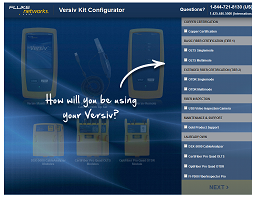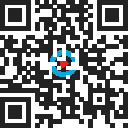What Is Cabling Certification?
Certification is critical for ensuring the reliability and longevity of a cabling system, given that it’s expected to provide service over decades of operation and future technology upgrades. In this article, you’ll learn about the return on investment (ROI) that certification provides, cable testing and troubleshooting, tools for the job, upgrading certification skills, and understanding test reports.
Contents
- Network Cable Testing and Troubleshooting
- Tools for Network Cabling Architects, Designers, and Consultants
- Stronger, Sharper Skills: CCTT Training
- Understanding Certification Test Reports
- Network Cabling Measurements and Certification Methods
- Keep Learning
The ROI of Certification
When you complete installation of a structured cabling system, there’s one more decision to make: whether to certify it.
For installers, certification is proof that you’ve done the work correctly — proof that can be important protection should issues arise months or even years down the road. That’s just one of the reasons why cabling certification is more important than ever.
Certification is not considered optional by manufacturers, either. Every reputable cabling system manufacturer requires a certification report before the end user can obtain a system warranty. In fact, certification supports manufacturer guarantees of performance on structured cabling.
Network Cable Testing and Troubleshooting
Network cable qualification provides assurance that the installed cabling links can support the data communications desired. Certification tester tools determine a link’s compliance with industry standards by category (TIA) or class (ISO), independent of specific network technologies. And as emerging technologies base new designs on these standards, the certified installed cabling will continue to support them. Find out about the different levels of testing in our overview of network cable testers.
If certification testing reveals failures, the next step is troubleshooting. When you certify with a Fluke Networks DSX Series certification tester, you have experts backing you up: the Fluke Networks Technical Assistance Center (TAC). They can dive deeper into your tester’s own data to help you troubleshoot complex issues while you’re on the job site, which can avoid disputes and even ensure manufacturer support.
Tools for Network Cabling Architects, Designers, and Consultants
When you’re analyzing, designing, and recommending network products and services to customers, success depends on your ability to stay current with new standards, performance requirements, technology, and industry information. Use our Statement of Work guidelines for ANSI/TIA or ISO/IEC standards to prepare proposals or specifications for testing twisted pair copper and fiber cabling installations.
Stronger, Sharper Skills: Certified Cabling Test Technician Training
Skill certification can be an immensely valuable endorsement of your expertise and experience. Certified technicians can be more effective in the field because they have a deeper understanding of best practices and make more efficient use of their tools — they may earn more, too. Are the benefits of certification training worth it? Find out why more than 10,000 technicians have gotten certified by Fluke.
Understanding Certification Test Reports
The certification report is a critical deliverable at the end of a cabling project. You see on your tester whether a link passes or fails testing, but your customer needs the details. Presenting those details — especially if your customer has questions — is increasingly part of your job. Is your software up to the task?
Our LinkWare™ PC cable test management software is designed to provide results in a professional, customized report that makes it easier for you to present results and answer questions. Learn how to ensure that you’re getting what you paid for and how to spot a superior installation in our Cable Testing 101 articles, Understanding Your LinkWare Report and How to Read the LinkWare™ PC Report.
And for Fluke Networks Versiv™ users, our Linkware Live gives your data the cloud-based power to manage and report on cabling certification jobs anytime, anywhere, with anyone, on any device.
Network Cabling Measurements and Certification Methods
We’ve developed a pair of posters that are easy to use for quick consults or training refreshers:
• Twisted Pair Cabling Measurements graphically explains, Insertion Loss, NEXT, FEXT, ACRN, ACRF, Delay/Skew, Return Loss, and more. Download it here.

• Twisted Pair Certification Methods diagrams and explains the Permanent Link, Patch Cord, Channel, and Modular Plug Terminated Link as defined by TIA and ISO, along with how to certify them using Versiv. Download it here








